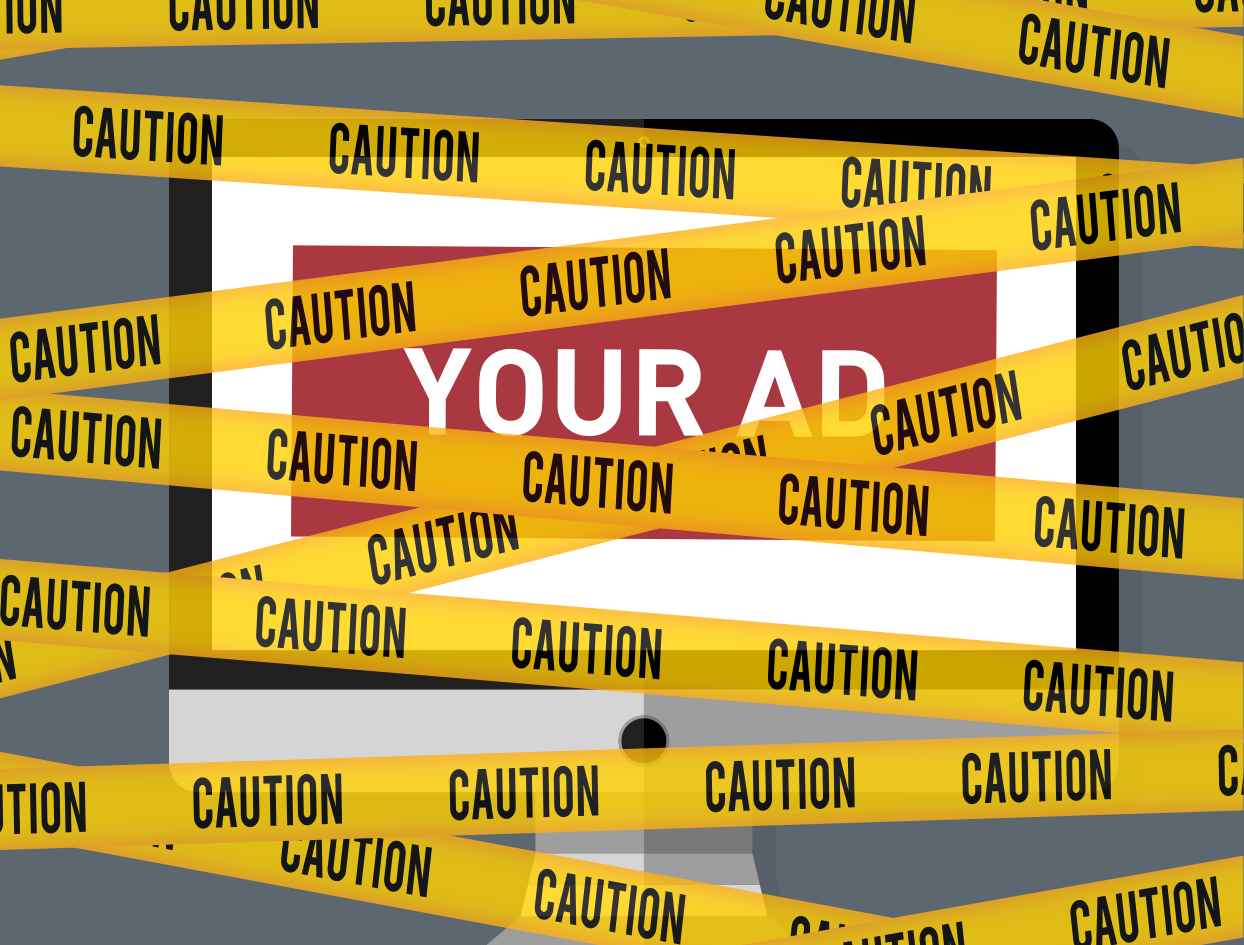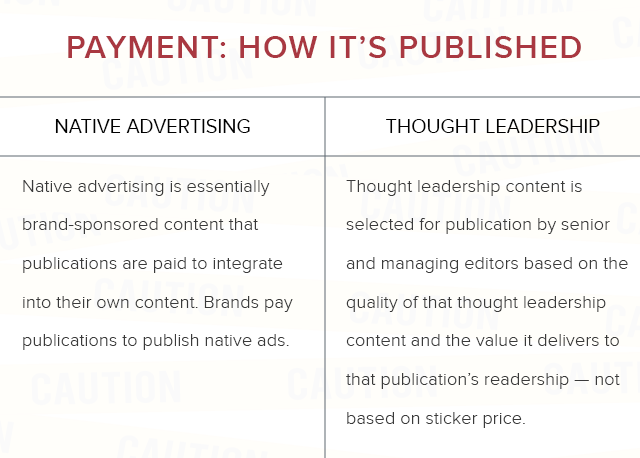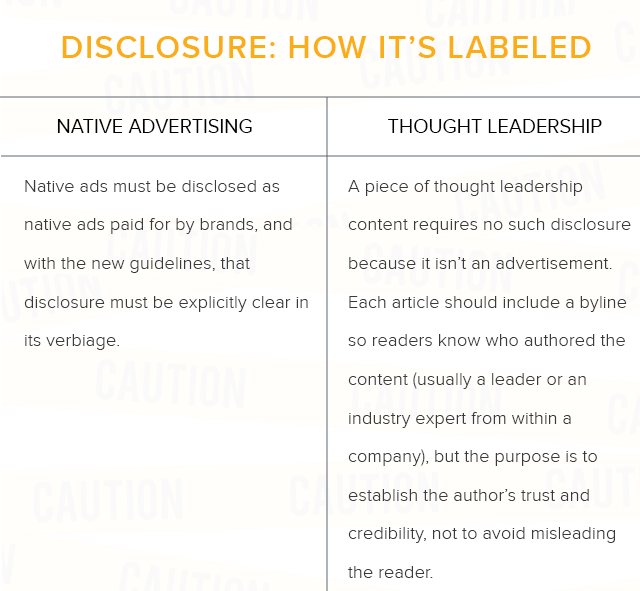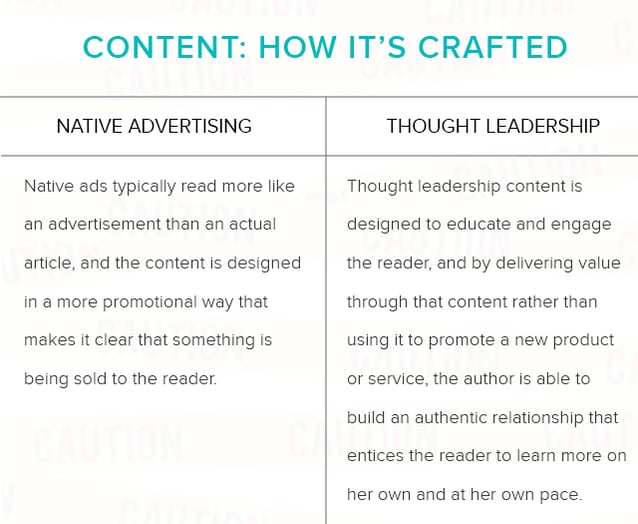
In December 2015, the Federal Trade Commission released its
updated guidelines on the practice of native advertising and its new requirements for marketers. The report goes into great detail about the FTC’s stance on native advertising, on misrepresentation and deception, and on regulations regarding native ad disclosure — forbidding the use of “
deceptive door openers” to entice people to click or read — that marketers must comply with.Shortly after the guidelines were announced, my team at Influence & Co. started receiving concerned notes and emails from our audience asking how this new ruling would affect our work. The questions ranged from “Do these FTC guidelines affect Influence & Co. at all?” to “Will this shut down your company?”
The simple and definitive answer to these questions is: nope. Not even a little bit.
The reason Influence & Co. will remain unaffected by the new guidelines surrounding native advertising is that we don’t use native advertising. Thought leadership content and native ads are two wildly different practices. Check out this graphic to help understand the major differences between the two:



Why Thought Leadership Wins
The biggest difference between thought leadership and native advertising — and ultimately why the FTC ruling does not at all impact Influence & Co. — is that thought leadership content is not camouflaged promotion. In fact, our team found that a promotional tone or focus is the biggest reason publication editors decline guest-contributed content; the more self-promotional a piece of content is, the less likely it is to be accepted or published.
Instead, creating and distributing thought leadership content is an opportunity for company leaders and individuals to share their ideas and expertise, build trust and authenticity, boost credibility and authority, and engage audience members who actually want to hear those company leaders’ messages.
While these two strategies — thought leadership and native advertising — can work in tandem, many companies are rushing to publish promotional native ad content rather than establish trust and credibility through nonpromotional thought leadership content. And that exclusive focus on the short-term, top-of-the-funnel benefits of a native ad campaign over the long-term, full-funnel benefits of thought leadership — combined with increased regulation — is what will really hurt native advertisers.
The FTC guidelines could potentially get stricter, and the price for native advertising will likely increase. Combine this with the rise in ad blockers and a plummeting readership, and you might be feeling anxious about the future of online content. Don’t worry; there’s a proven solution.
Developing and executing a comprehensive thought leadership strategy that blends guest-contributed thought leadership content with a fantastic blog strategy and high-quality gated content that’s worth the download can help marketers attract, educate, engage, and nurture the most qualified prospects through their funnels. And it can safeguard their teams from the increasing restrictions and costs of native advertising.
To better understand why building thought leadership through content marketing is so valuable, download our 8-step guide below: 










